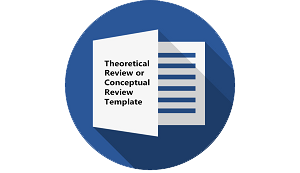Strategies for English Directives Applied by Indonesian Students to Obtain Information from Chatbot
DOI:
https://doi.org/10.30957/ijoltl.v8i3.749Keywords:
chatbots, directive strategies, politenessAbstract
Politeness in language can be seen from a socio-cultural and linguistic point of view. From the point of view of language, politeness can be seen from the linguistic structure and the meaning conveyed. Using polite language is not only between individuals who are part of society but it is also with chatbots, which is used to increase knowledge about politeness in language. This study examines politeness strategies used by students in delivering directives. ELIA (English Literature Information Assistant) is a chatbot created based on FAQs from students, and ELIA is used to provide information about lectures, final assignments, and other information related to study programs. The research method that was applied in this study is a qualitative descriptive method obtained from the ELIA admin and questionnaires. Data were collected after the ELIA is upgraded to be able to record the communication between students and ELIA. The data collected were in the form of textual communication records. The findings from the study indicate that the strategies applied by students to obtain information are directive strategies, namely direct strategies (40.2%), on-record indirect strategies (14.8%), off-record indirect requests (19%), and nonsentential strategies (26%). Based on the directive strategy used, direct and nonsentential strategies are strategies that do not show politeness. Strategies that show politeness are on-record indirect strategies and off-record indirect requests. In other words, the politeness strategy in directives applied by students is 33.8% of the total requests used.
Downloads
References
Budiarta, I. W., & Rajistha, I. G. N. A. (2018). Politeness in “Adit dan Sopo Jarwo†Animation. Lingua Cultura, 12(1), 25. https://doi.org/10.21512/lc.v12i1.1822
Cahn, J. (2017). CHATBOT: Architecture, Design, & Development. University of Pennsylvania.
Casillo, M., Clarizia, F., D’Aniello, G., & Massimo Santo, D. (2020). CHAT-Bot: A cultural heritage aware teller-bot for supporting touristic experiences. Pattern Recognition Letters, 131, 234–243.
Chaves, A. P., & Gerosa, M. A. (2020). How Should My Chatbot Interact? A Survey on Social Characteristics in Human–Chatbot Interaction Design. International Journal of Human–Computer Interaction, 1–30. https://doi.org/https://doi.org/10.1080/10447318.2020.1841438
Creswell, J. W. (2009). Research design: Qualitative, quantitative, and mixed methods approaches. SAGE Publications Inc.
Crolic, C., Thomaz, F., Hadi, R., & Stephen, A. T. (2022). Blame the Bot: Anthropomorphism and Anger in Customer–Chatbot Interactions. Journal of Marketing, 86(1), 132–148. https://doi.org/10.1177/00222429211045687
Dahiya, M. (2017). A Tool of Conversation: Chatbot. International Journal of Computer Sciences and Engineering, 5(5), 158–161.
Dharwadkar, R., & Deshpande, N. A. (2018). A Medical ChatBot. International Journal of Computer Trends and Technology (IJCTT), 60(1), 41–45.
Francesco Colace, Santo, M. De, Lombardi, M., Pascale, F., & Pietrosanto, A. (2018). Chatbot for E-Learning: A Case of Study. International Journal of Mechanical Engineering and Robotics Research, 7(5), 528–533.
Gagné, N. O. (2010). Reexamining the notion of negative face in the Japanese Socio linguistic politeness of request. Language & Communication, 30(2), 123–138. https://doi.org/10.1016/J.LANGCOM.2009.12.001
Haugh, M., Kádár, D. Z., & Márquez Reiter, R. (2022). Offence and morality: Pragmatic perspectives. Language & Communication, 87, 117–122. https://doi.org/10.1016/J.LANGCOM.2022.07.005
Hiremath, G., Hajare, A., Bhosale, P., Nanaware, R., & Wagh, K. S. (2018). Chatbot for Education System. International Journal of Advance Research, Ideas and Innovations in Technology, 4(3), 37–43.
Kavanagh, B. (2016). Emoticons as a medium for channeling politeness within American and Japanese online blogging communities. Language & Communication, 48, 53–65. https://doi.org/10.1016/J.LANGCOM.2016.03.003
Kim, S., Eun, J., Oh, C., Suh, B., & Lee, J. (2020). Bot in the Bunch: Facilitating Group Chat Discussion by Improving Efï¬ciency and Participation with a Chatbot. CHI, 1–13. https://doi.org/http://dx.doi.org/10.1145/3313831.3376785
Lalwani, T., Bhalotia, S., Pal, A., Bisen, S., & Rathod, V. (2018). Implementation of a Chatbot System using AI and NLP. International Journal of Innovative Research in Computer Science & Technology (IJIRCST), 6(3), 26–30.
Leech, G. (2014). The pragmatics of politeness. Oxford University Press.
Lowrey-Kinberg, B. (2019). Experimental results on the effect of politeness strategies on perceptions of police. Language & Communication, 69, 42–53. https://doi.org/10.1016/J.LANGCOM.2019.05.002
Nagarhalli, T. P., Vaze, V., & Rana, N. K. (2020). A Review of Current Trends in the Development of Chatbot Systems. 2020 6th International Conference on Advanced Computing and Communication Systems (ICACCS), 706–710. https://doi.org/10.1109/ICACCS48705.2020.9074420
Prayitno, H. J., Kusmanto, H., Nasucha, Y., Rahmawati, L. E., Jamaluddin, N., Samsuddin, S., & Ilma, A. A. (2019). The Politeness Comments on The Indonesian President Jokowi Instagram Official Account Viewed From Politico Pragmatics and The Character Education Orientation in The Disruption Era. Indonesian Journal on Learning and Advanced Education (IJOLAE), 1(2), 52–71. https://doi.org/10.23917/IJOLAE.V1I2.8785
Ranoliya, B. R., Raghuwanshi, N., & Singh, S. (2017). Chatbot for University Related FAQs. IEEE, 1525–1530.
Ren, W., & Fukushima, S. (2022). Perception and evaluation of requests on social media in Chinese and Japanese. Language & Communication, 87, 231–243. https://doi.org/10.1016/J.LANGCOM.2022.09.002
Skjuve, M., Følstad, A., Fostervold, K. I., & Brandtzaeg, P. B. (2021). My Chatbot Companion - a Study of Human-Chatbot Relationships. International Journal of Human - Computer Studies, 149, 1–14.
Vincent, B., Power, K., Crosthwaite, P., & Gardner, S. (2023). Directives in COVID-19 government guidance: An international comparison. Applied Corpus Linguistics, 3, 1–14. https://doi.org/https://doi.org/10.1016/j.acorp.2023.100063
Yan, R. (2018). “Chitty-Chitty-Chat Botâ€: Deep Learning for Conversational AI. Twenty-Seventh International Joint Conference on Artiï¬cial Intelligence, 5520–5526.
Zhao, X., & Mao, Y. (2021). How to grapple with the green-eyed monster: A discursive approach to jealousy management in Chinese TV dramas. Language & Communication, 79, 133–146. https://doi.org/10.1016/J.LANGCOM.2021.05.003
Zhou, L. (2022). Self-denigration in Mandarin Chinese: An alternative account from sincerity. Language & Communication, 87, 1–10. https://doi.org/10.1016/J.LANGCOM.2022.05.002
Downloads
Published
How to Cite
Issue
Section
License
Authors who publish with this journal agree to the following terms:
- Authors retain copyright and grant the journal right of first publication with the work simultaneously licensed under a Creative Commons Attribution-ShareAlike 4.0 International License that allows others to share the work with an acknowledgement of the work's authorship and initial publication in this journal.
- Authors are able to enter into separate, additional contractual arrangements for the non-exclusive distribution of the journal's published version of the work (e.g., post it to an institutional repository or publish it in a book), with an acknowledgement of its initial publication in this journal.
- Authors are permitted and encouraged to post their work online (e.g., in institutional repositories or on their website) prior to and during the submission process, as it can lead to productive exchanges, as well as earlier and greater citation of published work (See The Effect of Open Access).












